You might see certain terms on the tag of a raspberry plant you’re eyeing at your local nursery. Fall bearing. Or everbearing.
Perhaps a little confused, you move on, and come across a blackberry plant. Floricane fruiting, the tag reads.
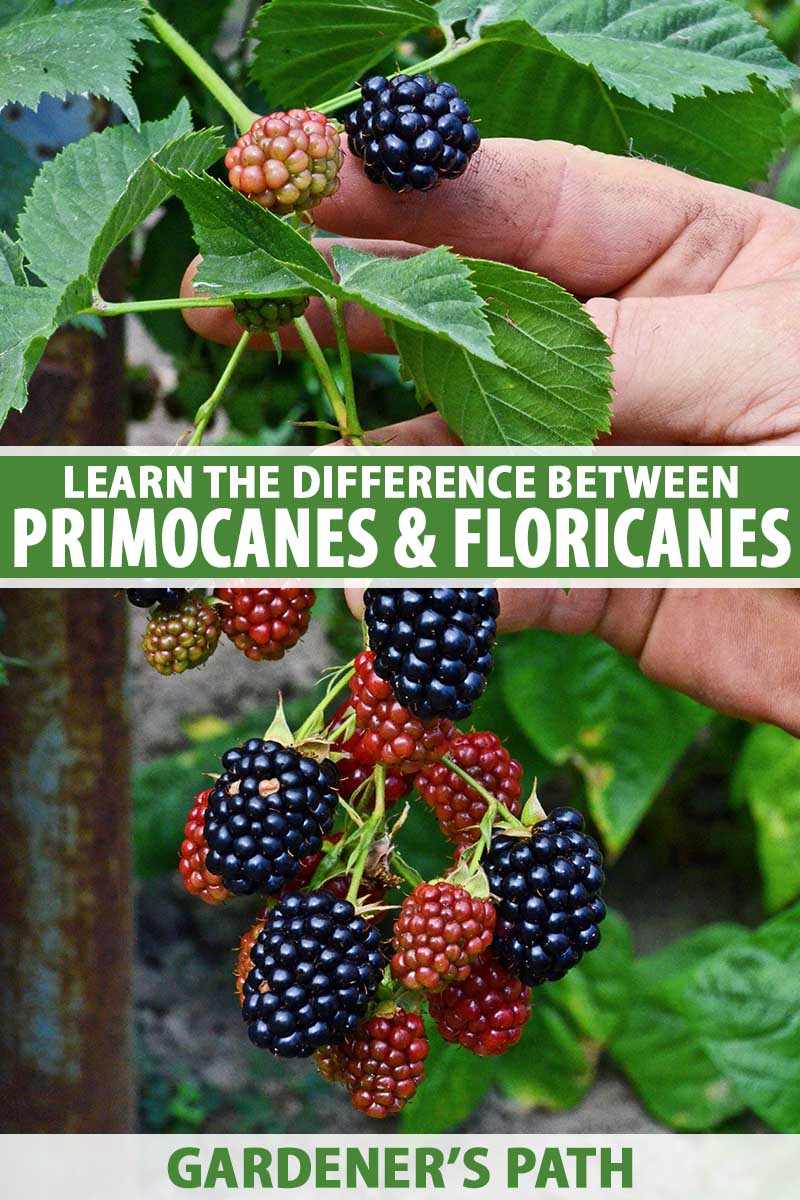
We link to vendors to help you find relevant products. If you buy from one of our links, we may earn a commission.
What does that even mean? What’s the difference? Does it matter?
All of this can seem confusing, but it doesn’t have to be. We’ve got all the answers laid out for you below.
Here’s what we’ll talk about in this article:
What You’ll Learn
What Are Canes?
“Cane berries” is a term used synonymously with the word brambles, which is what many of us call plants in the Rubus genus.

Bramble means thorn, but many new varieties of Rubus are thornless, so bramble is not inclusive of every type of blackberry, raspberry, boysenberry, and the like.
All Rubus plants grow canes, however, and thus – “cane berry” it is.
We’ll stick with that here! But what are canes, you ask?
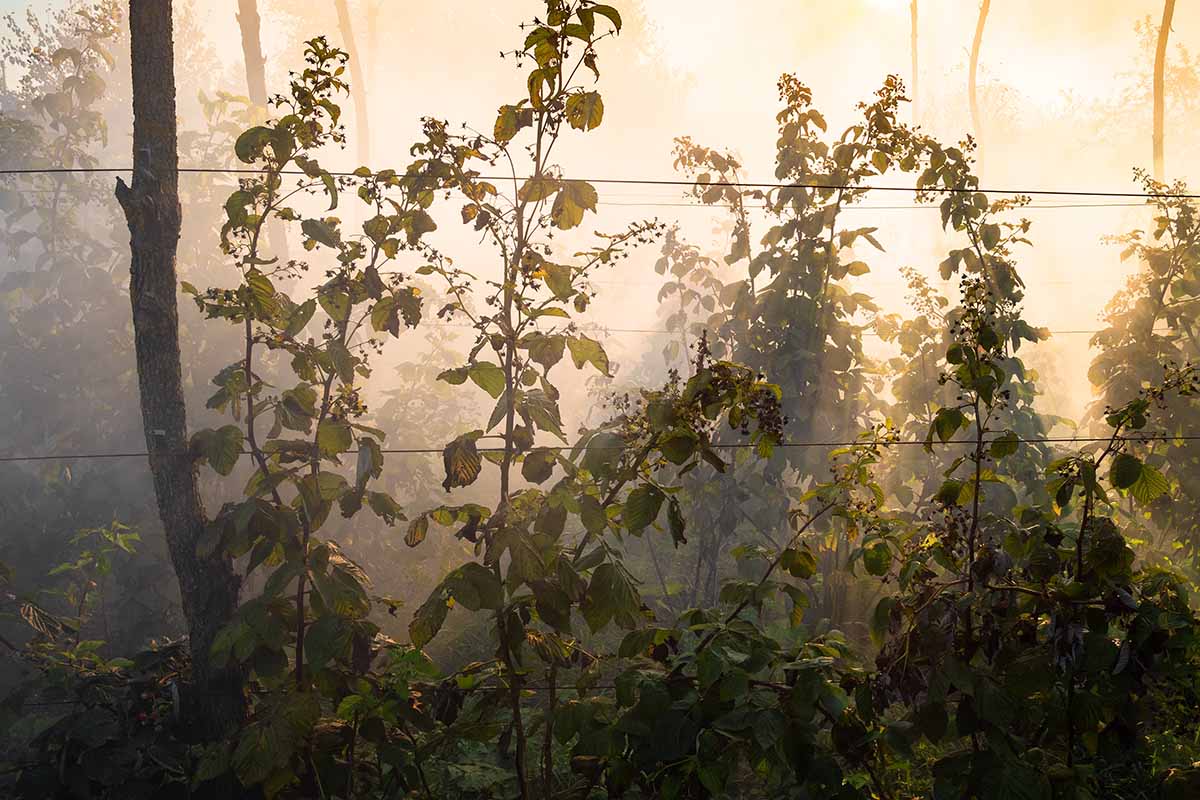
A cane is a biennial, long, woody shoot which grows out of the perennial roots from a bud, the crown, or the root of the plant itself.
These shoots come in two types: primocanes and floricanes. Let’s find out what those are all about.
Primocane vs. Floricane
The name of the cane makes it easy to remember which is which.
“Primocane” sounds a lot like primary, doesn’t it? These are what biennial shoots are called in their first season. These are mainly comprised of vegetative growth and will initiate flower buds in the summer and fall, usually for the next year.
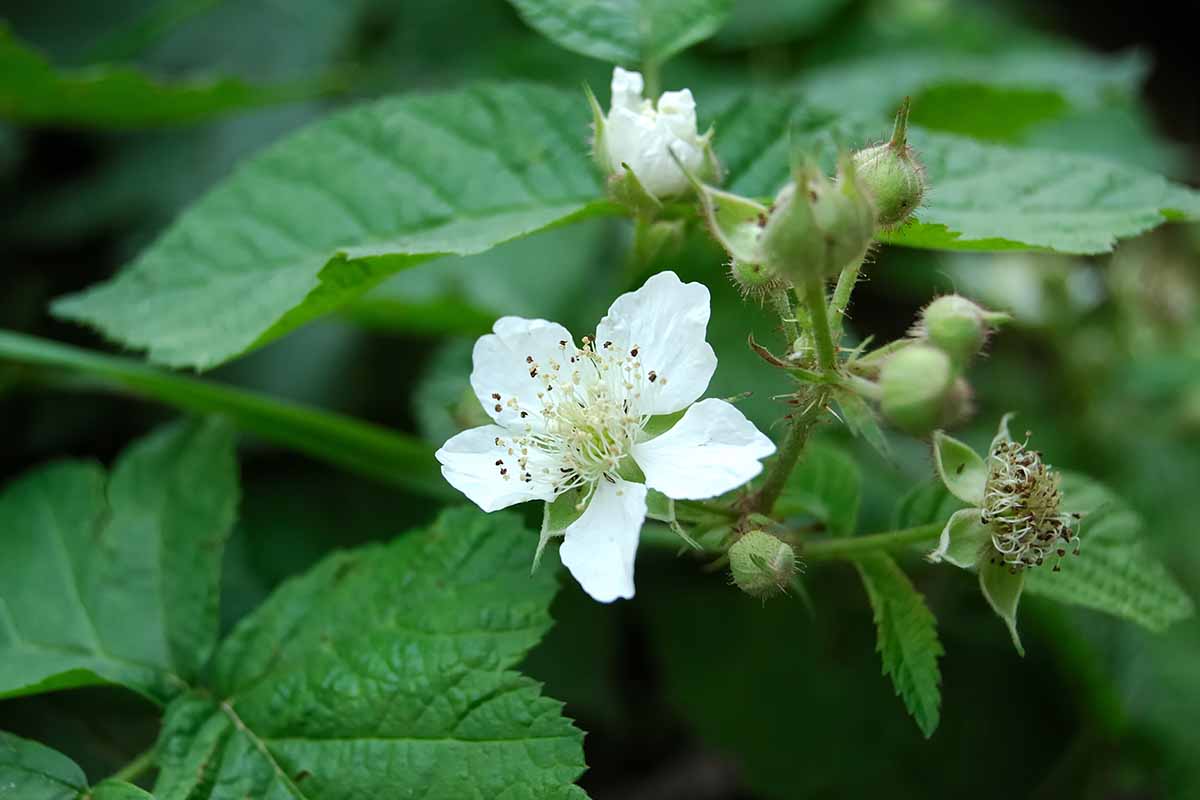
“Floricane” is the name for that same shoot in the second season. It has the root word for “flower” in it, so you’d think the second year would be the season it would flower and bear berries.
Well, you’d be right. But clarifying terms here is not as easy as simply defining any flowering shoot as a floricane. Some primocanes do in fact produce those luscious berries you’re currently drooling about.
Rather than referring to the cane itself as one or the other, I find it easier and clearer to refer to the biennial shoot as being in its primocane or floricane year, or in other words, in its first or second season.
It’s too easy to confuse the terms and imagine these as two independent varieties of shoots. Rather, it’s one shoot with a different name, depending on how old it is.
Plus, a plant can have both at one time. They often do.
Whether flowers and fruits are present on the cane during the primocane year and/or the floricane year depends on the fruiting type. We’ll get into the differences between the two types of plants below.
For now, how can you tell the difference between the two shoot types?

Primocanes are fresh shoots arising from the bud, crown, or root. They are thick stemmed and succulent, with long internodes. The leaves on these have five leaflets, and early in the season, these leaves are bright green and soft.
Floricanes have shorter internodes, three leaflets, and the leaves are smaller and darker in color than primocane leaves. They also die back to the crown of the plant following fruiting.
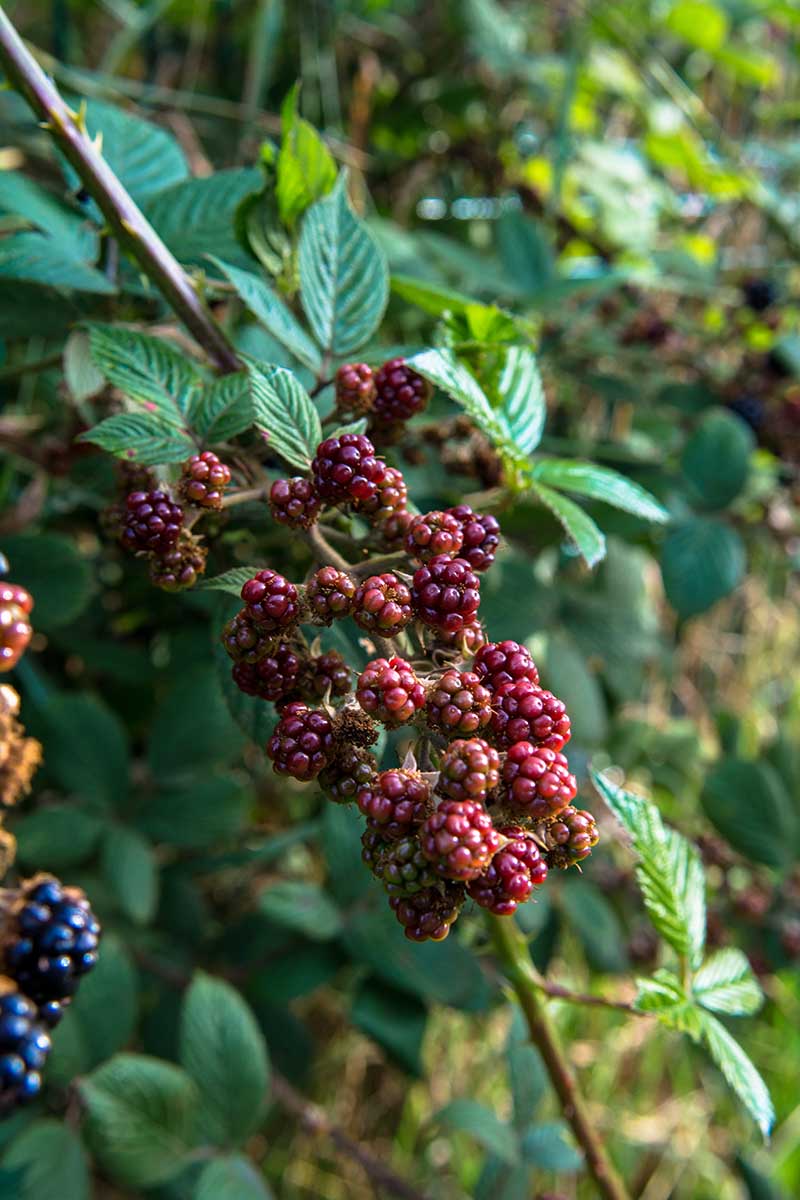
Got it? Let’s move on and look into how that process works, depending on the plant.
Primocane-Fruiting Plants
Primocanes, and primocane fruiting, are two different terms.
We talked about the former above.
The latter are plants which will grow fruit at the tip of their primary year canes. They produce berries in the fall, from August to October, depending on the variety.

If you check the tag of a raspberry plant at the nursery and it says “everbearing” or “fall bearing,” it is a primocane bearer or fruiter.
If a primocane on these plants overwinters successfully or it isn’t pruned out, it will flower again in the early summer of the second season – when it is technically a floricane).
Thus, just because it is named as such does not mean it only flowers and produces berries on the first year’s canes.
Rather, primocane-fruiting plants will flower on both, if given the chance. However, both the quantity and the quality of the floricanes’ fruit will suffer on primocane-bearing types.
Most growers of primocane-fruiting types will prune all of the canes down close to the ground while the bush is dormant, usually in early spring. The next season, the primary shoots will grow and reproduce again.
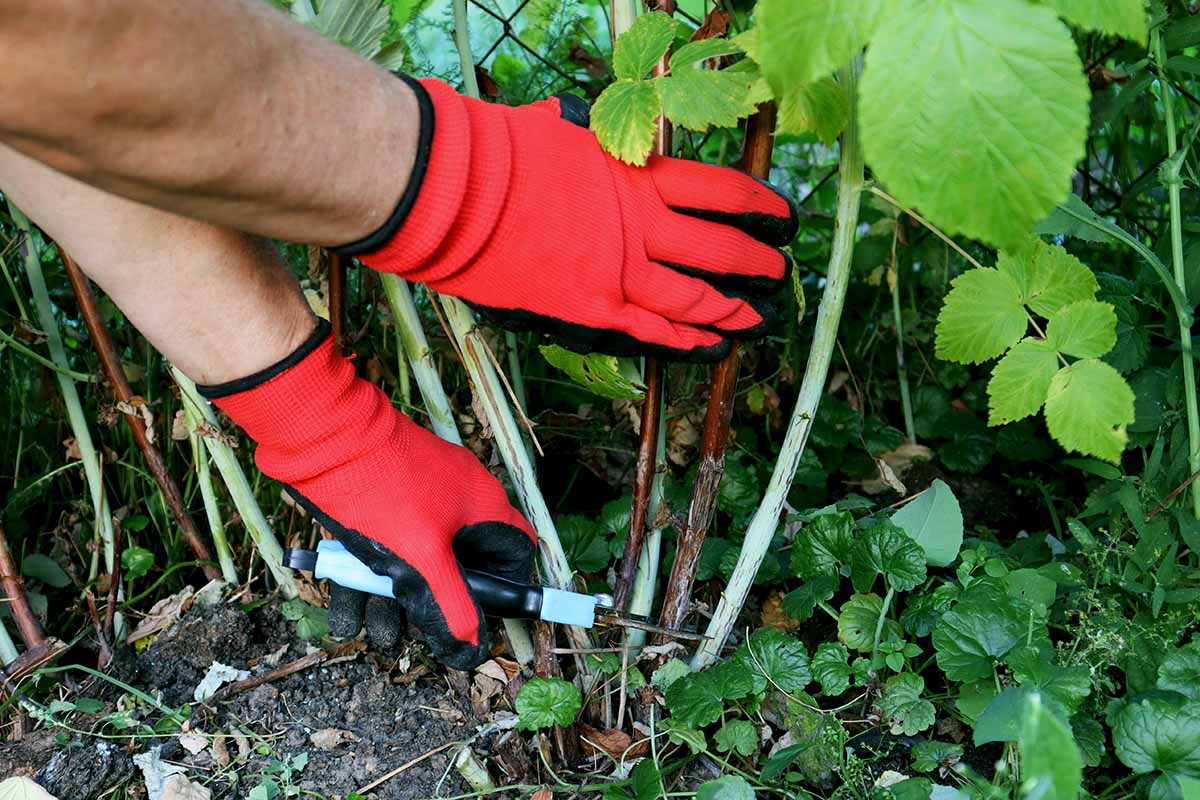
Why choose these over floricane-bearing plants? They can produce fruit in their first year, and pruning is simpler overall, thanks to being able to cut all of the canes down without having to think about which type is which.
Plus, the shoots of this type don’t need to be able to withstand harsh winters to produce a harvest.
Floricane-Fruiting Plants
Floricane-fruiting plants are summer bearing, producing fruit in June and July from buds initiated the previous year.
Therefore, the canes must overwinter.
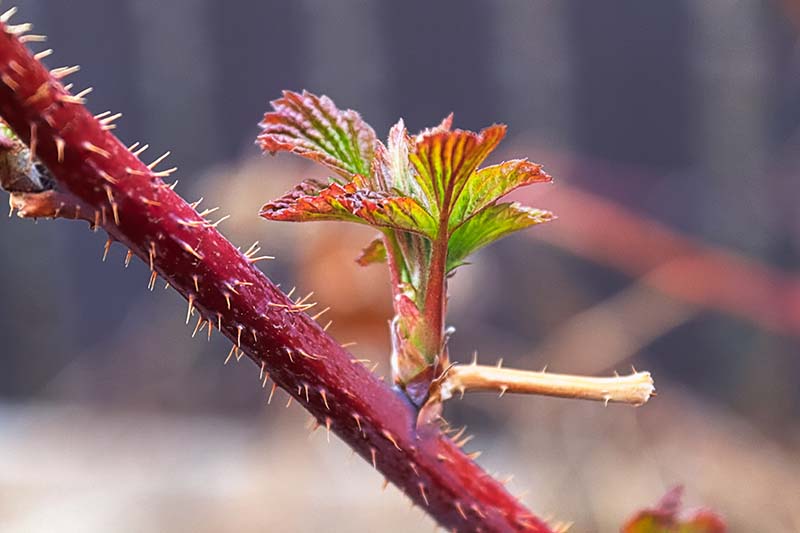
Pruning these plants after harvest is a little more complicated, since you must work around the first-year shoots to prune out the old shoots.
A certain number of the best vegetative shoots on each plant – five to eight for blackberries and eight to 12 for raspberries – are kept in place and tied up in one of several available trellising methods to overwinter and fruit the following year.
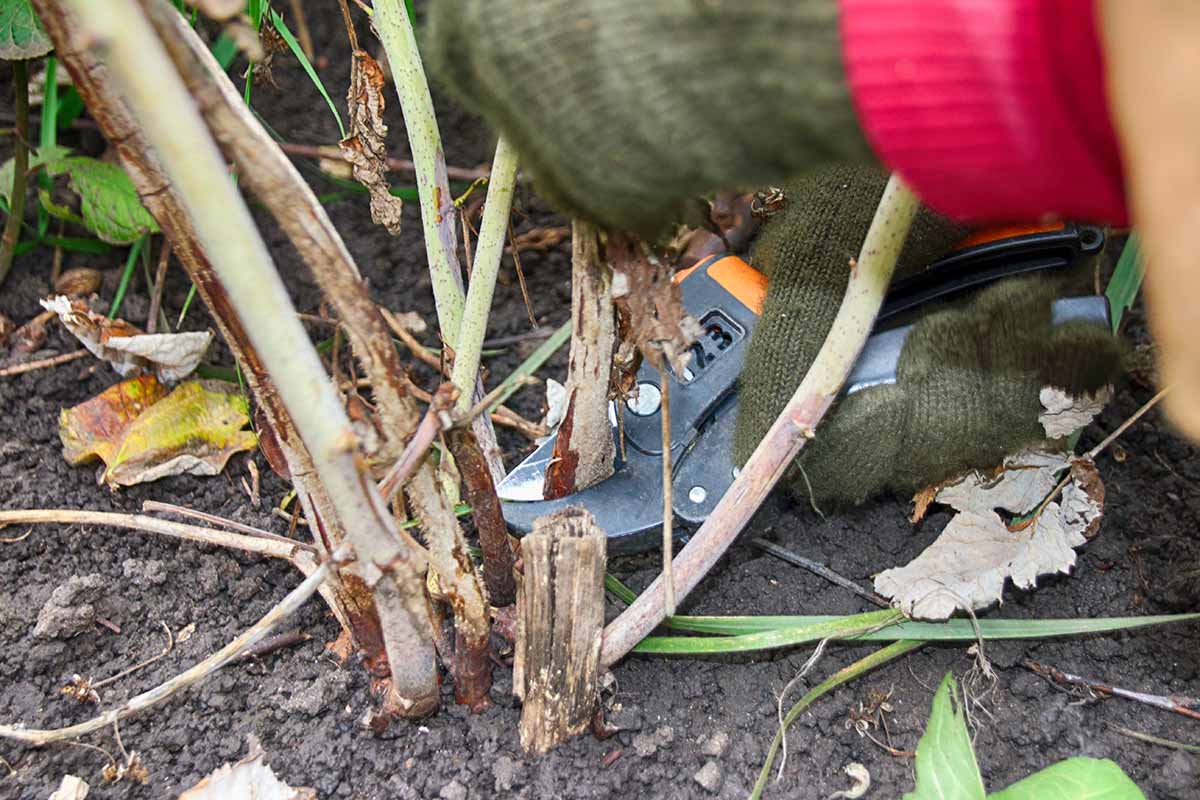
Salmonberry (R. spectabilis) and thimbleberry (R. parviflorus), common wild berries that are also sometimes grown in cultivation, are both floricane fruiters.
The advantage of growing this type is the availability of fruit that is ready earlier in the season, avoiding the majority of potential spotted winged drosophila (SWD) damage.
Plus, if you want earlier fruit, the berries on these are much better in quality than those grown the second year for primocane-bearing varieties.
Laden with Sweetness
Thorns or no thorns, cane berries have got to be some of my favorite types of fruit, whether enjoyed fresh out of the garden, gracing a dessert, or munched off a wild plant on a hike.
To recap:
Everbearing or fall-bearing cane berries are primocane fruiters, and they produce fruit later in the season.
All canes can be pruned to the ground while dormant for a fresh batch of shoots the next season.
Summer-bearing types are floricane fruiters, and these produce fruit in their second summer. Canes need to overwinter successfully to yield a crop, and they often ripen before SWD is at its peak.
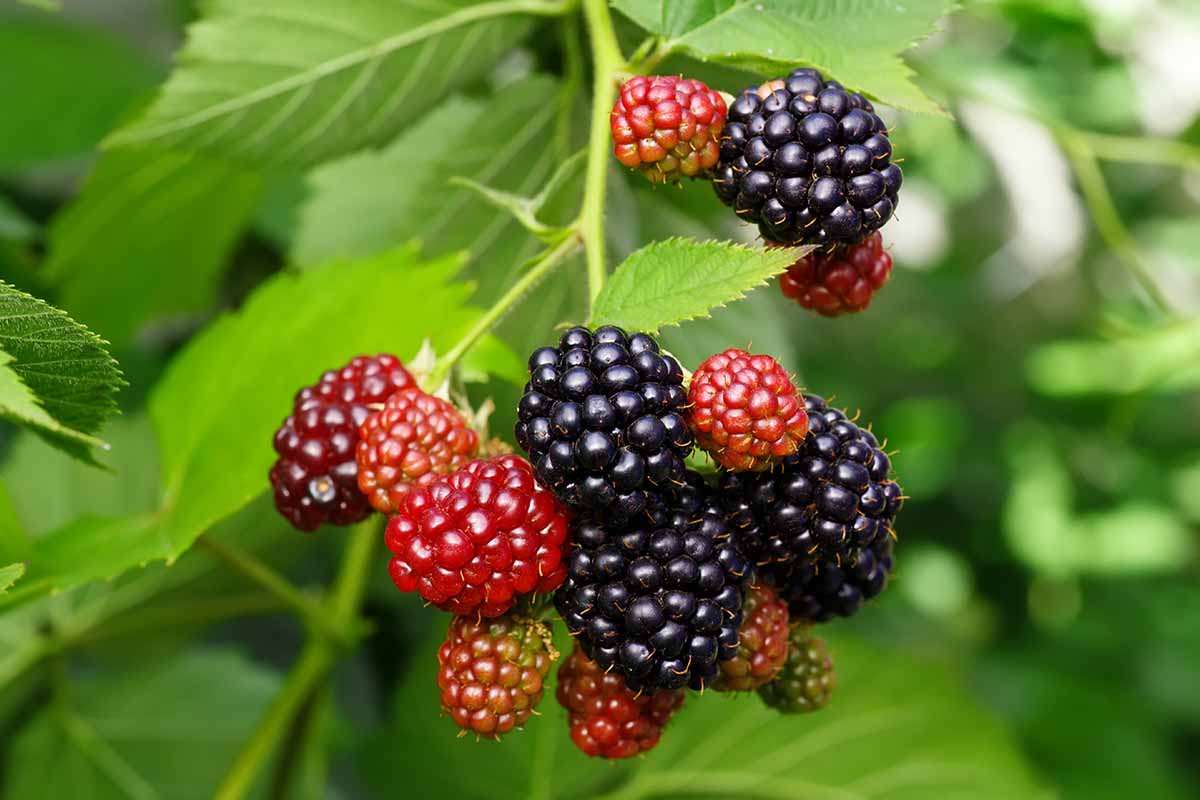
What cane berry species do you grow at home? Which type would you choose to add to your garden – summer- or fall-bearing? Tell me about it and share your reasons why in the comments below!
While you’re here, read these guides next to learn more about cane berry care:
This topic is 100% not intuitive
And that’s why we published this helpful guide, Guy! Please let us know if you have any specific questions we can assist with.
Even though I’m still a bit confused between the Primacane and the floracane, I think I have the floracane. I live in Florida, and I found thorny wild blackberry plants on the old family farm. I dug up 3 of the plants and transported them to my home. By then they were withered. But the next morning, I cut the withered parts off and planted the roots with a few stems. I thought they were all dead. But in about two months, new plants began to come up next to the old dead stems. That why I think they are… Read more »
Hi Cynthia, blackberries are such resilient plants! It’s hard to wrap your head around this topic, isn’t it. It’s also hard to say whether they will fruit this coming season given you dug them up and moved them. However, most blackberry varieties are floricane fruiters. How many leaflets do the thorny, dug up ones have? If three, you can assume they are floricanes and you’ll have some fruit this season. Keep in mind that digging them up may have stressed them so it could take some time to get a good amount of fruit. Feel free to let us know… Read more »
Thank you.
I think one big difference is the need to trellis or tie the floricanes over the Winter.
Could you suggest the best ( and hopefully easiest) method for supporting the canes?
Hi Carol, floricanes don’t need to be supported, typically, because they die back after fruiting. The primocanes on summer-bearing types can be supported over the winter. There are many methods of supporting canes and the best one will vary depending on where you live.
The easiest way is to use something as simple as strong tomato cages, like these sturdy 39-inch supports from Gardener’s Supply. You might want to add additional support by tying the canes with twine. Larger plants might need multiple or taller cages.
those tomato cages do work well!
Planted blackberries last fall. The bushes look very healthy but long green shoots about 3 to 4 foot tall have grown out of the bushes. Should these be cut back now or will they produce this first year? I don’t know if the bushes are primo or floricane.
This depends in part on what type of blackberries you are growing. The new growth you described are the floricanes- these are canes in their first year of growth that have just emerged. These shoots take on the new name “floricanes” when they turn two years old. Most plants will have canes of different ages at the same time. Knowing what to prune is determined by the type of blackberry you’re growing, and when it produces fruit. But you want to keep those first-year primocanes in place. See our guide to pruning blackberries for more tips.
Not sure if I understand completely. Are you saying that primocane fruiters will have inferior berries on the floricane the following season as compared to varieties that are floricane fruiters only?
Primocane fruiters will produce a more abundant harvest if pruned properly to remove the floricanes, diverting energy to new growth the following season rather than a second harvest.
Also, if the previous question is ‘yes’, can I improve the fruit quality on the floricanes by removing the flowers from the primocane by tipping them?
I’m not sure why you would do this exactly, and I don’t know that it’s possible to say for sure. You would likely get some fruit if you encouraged these plants to produce on floricanes only, but nothing that compares to their chief harvest since it’s simply not in their biology to do so. Primocane fruiters produce the best berries in the fall at the tip of primary year canes, and tipping to remove these flowers will eliminate the production of that harvest.
Three years ago we bought a house that had a dilapidated blackberry trellis with some type of thornless blackberry bushes (and a couple blueberry bushes). That first summer the blackberry harvest was phenomenal. We didn’t have a clue of what we were doing so for that first year all we did was pick (made for great gifts). The 2nd year, with the trellis falling down all around, the yield was about 50%. This past late winter we decided to get serious and be good neighbors (after all, surprise gifts of blackberry cobbler year round will only take you so far)… Read more »
Looks great, Teri. Our guide to pruning blackberries can help! Trimming back spent floricanes (the older, second-year growth) in the fall followed by pruning primocanes (the new growth) in the winter or early spring is typically the way to go. Trimming primocanes again in the spring before flowering can also help to promote branching and a more abundant harvest.
I planted raspberries last year–but I didn’t keep the tag! They grew all summer and produced some fall fruit (in this first year). We cut back the canes. This year they grew like crazy and produced a nice summer crop of smaller berries, but now in fall they’re producing a lot of large berries at the ends of the canes. So do I have a primocane variety? And can I prune them down without regard for which cane type next spring?
Hello Mike Bodkin. It’s great to hear your raspberries are in good form! From your description of the harvest, I would say they are primocanes, but it wouldn’t hurt to go back and look at the leaves and double-check them against this info from the guide: Primocanes are fresh shoots arising from the bud, crown, or root. They are thick stemmed and succulent, with long internodes. The leaves on these have five leaflets, and early in the season, these leaves are bright green and soft.Floricanes have shorter internodes, three leaflets, and the leaves are smaller and darker in color than… Read more »
Just a quick note on another subject….metal circular tomato stands work great on black raspberries
if you attach a wooden stake it gives the plant even more support
Thanks for sharing your experience!